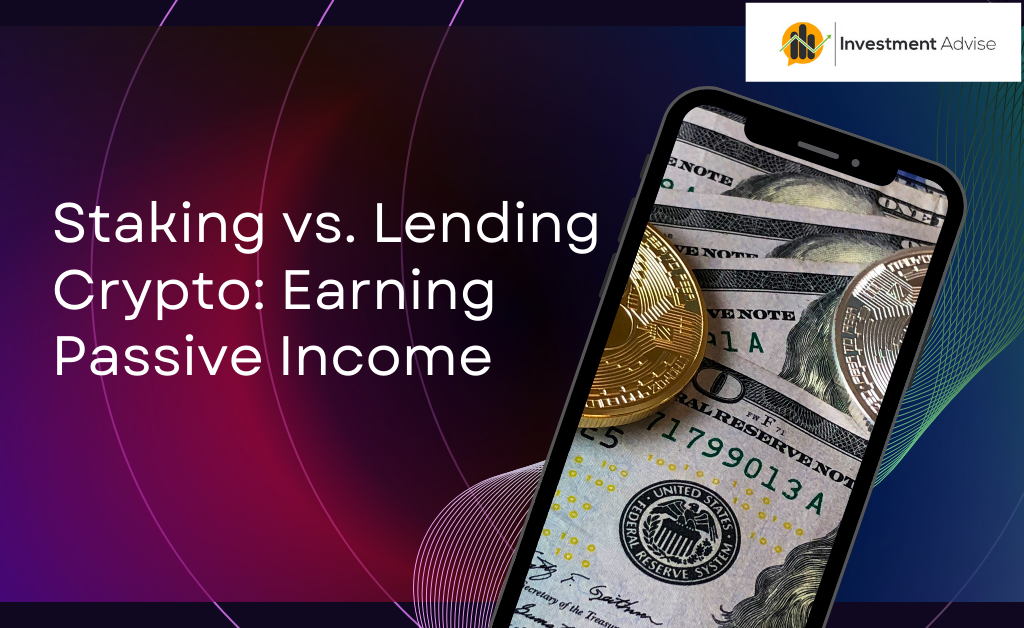The cryptocurrency landscape offers a plethora of opportunities beyond mere trading. Two prominent avenues for generating passive income are staking and lending. While both methods involve entrusting your digital assets to a platform or network, they function distinctly, each with its own set of risks and rewards. Let’s delve into the nuances of staking and lending to help you make informed decisions about your crypto portfolio.
Understanding Staking
Staking is essentially a process of holding onto your cryptocurrency to support the operations of a blockchain network. When you stake your coins, you contribute to the network’s security and validation of transactions. In return, you’re rewarded with additional coins or tokens.
How Does Staking Work?
To stake, you typically need to transfer your cryptocurrency to a staking wallet or platform. The minimum amount required to stake, often referred to as the “staking minimum,” varies across different coins and platforms. Once your coins are locked in, they participate in the consensus mechanism of the blockchain. The more coins you stake, generally, the higher your potential rewards.
Key Benefits of Staking
- Passive Income: Earn additional cryptocurrency without actively trading.
- Support for Network: Contribute to the security and growth of the blockchain.
- Potential for Governance: Some staking platforms allow you to participate in decision-making processes.
Risks Associated with Staking
- Locked-in Funds: Your staked coins are typically inaccessible for a certain period.
- Impermanent Loss: In some cases, staking can lead to impermanent loss, especially in volatile markets.
- Slashing Penalties: Some blockchains impose penalties for network downtime or other misconduct.
Crypto Lending: A Different Approach
Crypto lending involves depositing your cryptocurrency on a lending platform to earn interest. You, in essence, become a lender, providing funds to borrowers who require cryptocurrency for various purposes. In exchange, you receive interest payments on your deposited assets.
How Does Crypto Lending Work?
To start lending, you need to create an account on a crypto lending platform. Once your account is verified, you can deposit your supported cryptocurrencies. The platform matches you with borrowers, and you begin earning interest. The interest rates can vary based on the cryptocurrency, the lending platform, and market conditions.
Key Benefits of Crypto Lending
- Flexibility: You can often withdraw your funds at any time.
- Potential for Higher Returns: Interest rates on crypto lending can sometimes exceed those offered by traditional savings accounts.
- Diversification: Lending can be part of a diversified investment strategy.
Risks Associated with Crypto Lending
- Counterparty Risk: There’s a risk that borrowers may default on their loans.
- Smart Contract Vulnerabilities: Lending platforms rely on smart contracts, which are susceptible to hacks.
- Market Volatility: The value of your crypto collateral can fluctuate, potentially affecting your loan position.
Choosing Between Staking and Lending
The decision to stake or lend your cryptocurrency depends on several factors:
- Risk Tolerance: Staking generally involves higher risk due to locked-in funds and slashing penalties, while lending carries counterparty and smart contract risks.
- Time Horizon: If you need quick access to your funds, lending might be a better option. Staking often requires a longer commitment.
- Desired Returns: Interest rates on lending can be higher, but staking rewards can also be substantial, especially for coins with strong network growth.
- Cryptocurrency Type: Some cryptocurrencies are primarily designed for staking, while others are more suitable for lending.
Ultimately, both staking and lending offer opportunities to generate passive income from your cryptocurrency holdings. By carefully considering the factors outlined above, you can make informed decisions that align with your investment goals and risk tolerance.








